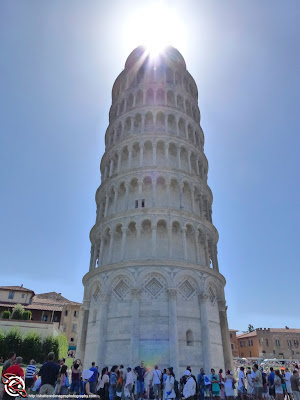
Lens flair occurs whenever bright light strikes the front of the camera lens. This is common with subjects that are backlit, and in these circumstances will greatly reduce contrast. However lens flair can also be used as a creative element in your photography.
 |
| Midna with Lens Flair |
 |
| Leaning Tower of Pisa with Lens Flair |
can then start experimenting with more creative ways to use the light.
Follow Us
Website
YouTube
No comments:
Post a Comment